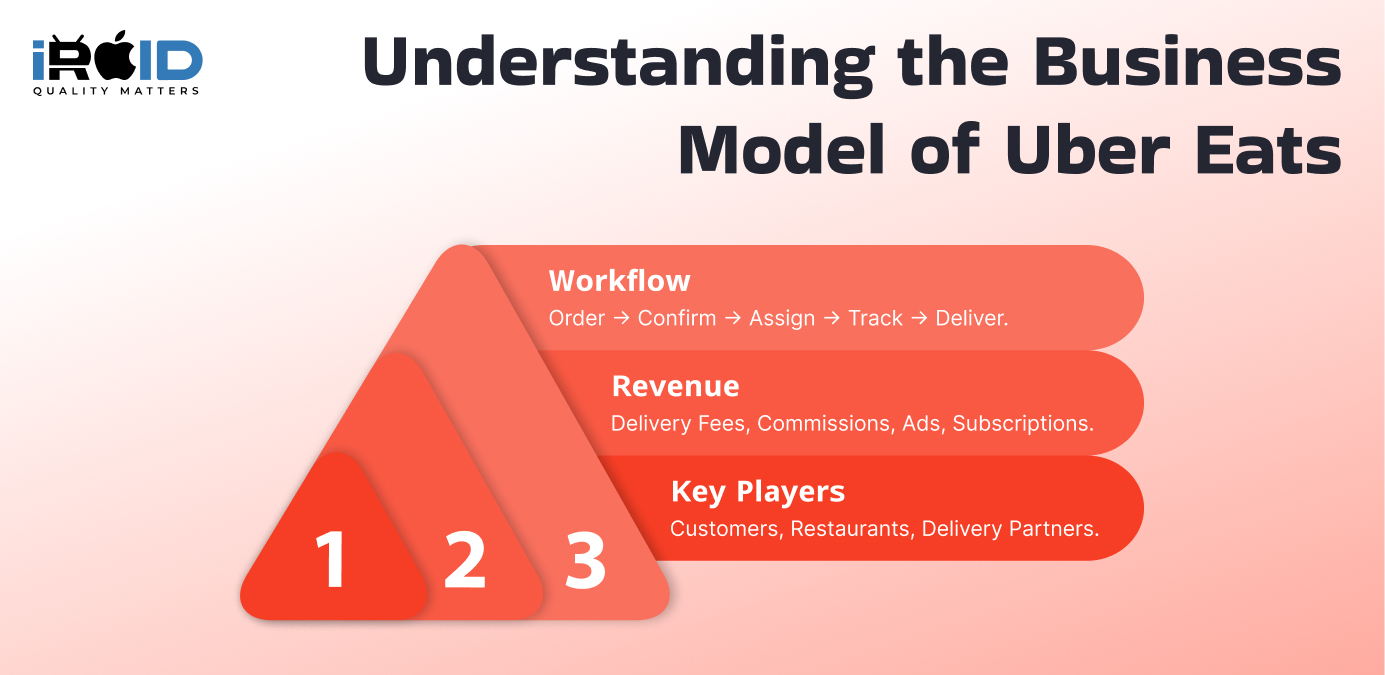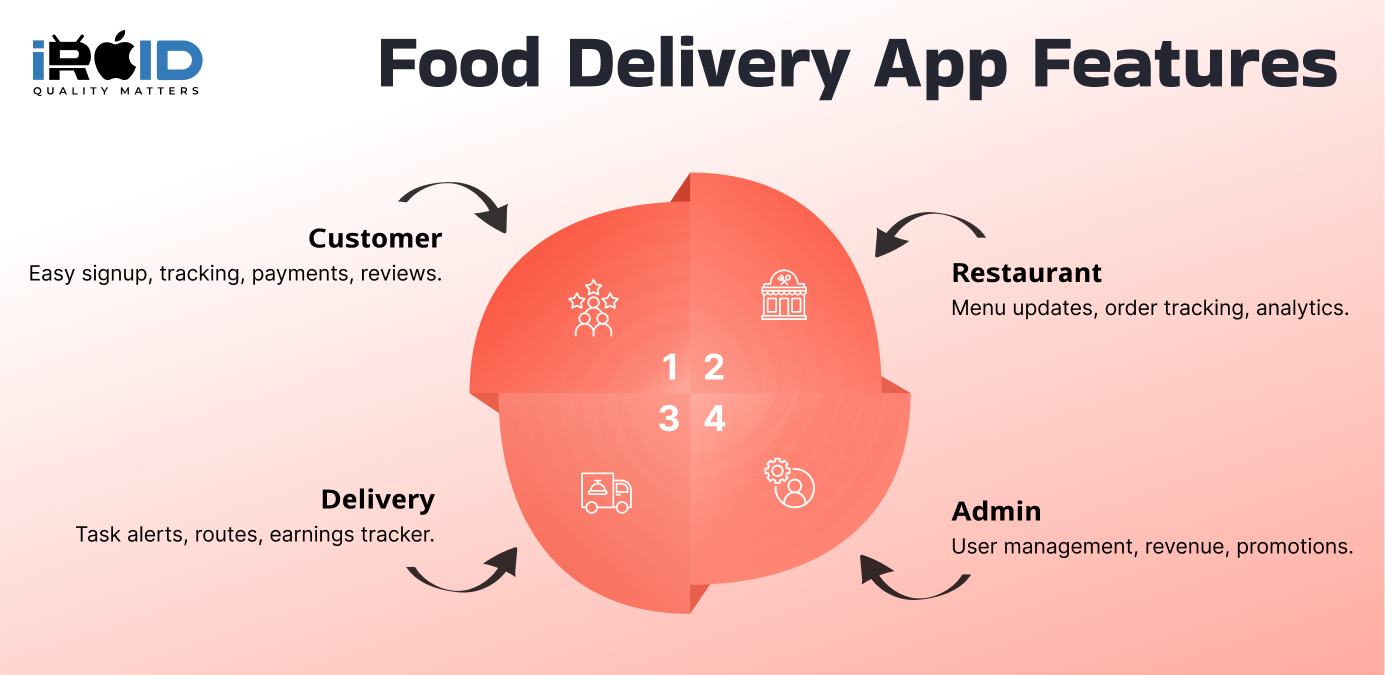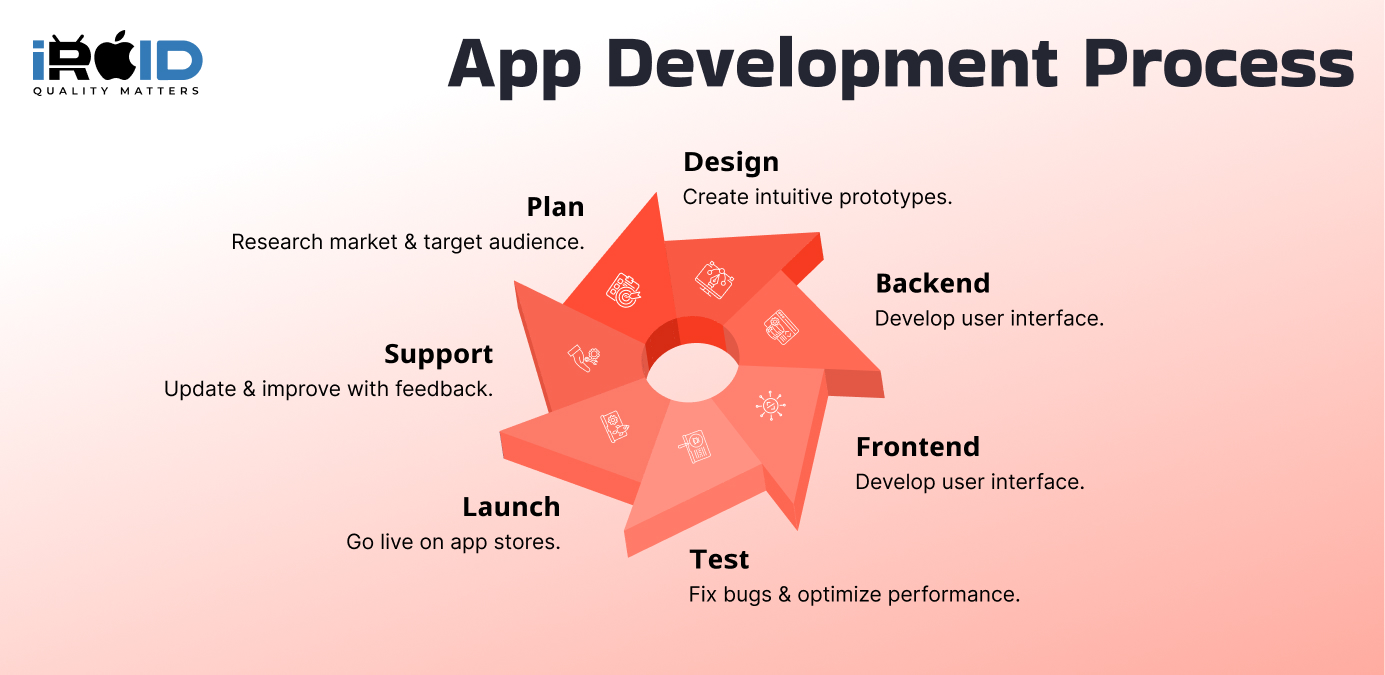1 Introduction
Overview of On-Demand Food Delivery Apps
In today’s fast-paced world, convenience is key and on-demand food delivery apps have transformed how we eat. These platforms, such as Uber Eats, DoorDash, and Zato, allow users to browse local restaurants, place orders, and receive food right at their doorstep with just a few taps on their smartphones.
Brief and rise of platforms like Uber Eats, DoorDash, and Zomato
The concept of food delivery isn’t new; however, it gained massive traction with the advent of smartphones and the gig economy. Platforms like Uber Eats emerged around 2014, revolutionizing the industry by connecting hungry customers with their favorite restaurants through a seamless digital interface. The rise in urban living and a busy lifestyle contributed to the growth of these apps, making them essential services for many.
Market Demand and Opportunities
Growth statistics and the increasing popularity of food delivery services
According to recent reports, the global food delivery market is expected to reach over $200 billion by 2025. As more people opt for home dining, especially post-pandemic, this trend shows no signs of slowing down.
Key factors driving the on-demand food delivery market
Several factors fuel this booming market, including:
-
Increase in smartphone penetration.
-
The growing trend of online ordering.
-
A shift in consumer preferences towards convenience.
Objective of the Blog
This blog aims to guide aspiring entrepreneurs on how to build a food delivery app like Uber Eats step-by-step. From understanding the business model to navigating the technologies required, we’ll cover all the bases to get you started.
2. Understanding the Business Model of Uber Eats

Key Stakeholders
The Uber Eats ecosystem consists of three primary stakeholders:
-
Customers: Individuals craving food who seek convenience.
-
Restaurants: Local eateries looking to expand their reach.
-
Delivery Partners: Individuals who transport orders to customers, often working as freelancers.
Revenue Streams
Uber Eats generates revenue through various channels:
-
Delivery Fees: Charges applied to customer orders.
-
Restaurant Commissions: Fees taken from restaurants for being part of the platform.
-
In-App Advertising: Promotions for restaurants to enhance visibility.
-
Subscription Models: Services that offer free delivery for an annual fee or monthly subscription.
Workflow of the App
Understanding how the app functions is crucial:
-
Order placement by the customer.
-
Restaurant confirmation of the order.
-
Delivery assignment to a delivery partner.
-
Real-time tracking of the order.
-
Delivery completion and payment processing.
3. Features of a Food Delivery App

Customer Panel Features
A user-friendly experience is vital, and essential features include:
-
User Registration and Login: Simple signup process with options for social media integration.
-
Restaurant Browsing and Search Functionality: Filters for cuisine type, ratings, or distance.
-
Real-Time Order Tracking: Customers can see where their food is during delivery.
-
Multiple Payment Options: Credit cards, digital wallets, and cash to cater to all preferences.
-
Reviews and Ratings: Users can share their experiences, fostering trust and improvement.
Restaurant Panel Features
Restaurants also need tools to manage their orders effectively:
-
Menu Management: Easy updates to menu items and specials.
-
Order Notifications and Tracking: Real-time alerts when orders are placed and their statuses.
-
Sales Analytics: Insight into performance through customer orders and revenue reports.
-
Payment Settlement Dashboard: Overview of earnings and pending payments.
Delivery Partner Panel Features
Support for delivery partners is essential:
-
Delivery Task Assignment: Notifications of new tasks through the app.
-
Navigation and Route Optimization: Maps guiding the best route for deliveries.
-
Earnings Tracker: Real-time updates on earnings and tips.
-
Availability Status: Options to set online or offline to manage workload.
Admin Panel Features
For overall management:
-
User and Restaurant Management: Admin tools for monitoring and modifying user and restaurant data.
-
Revenue Tracking: Overview of financial performance.
-
Promotions and Discount Management: Tools for creating and managing special offers.
-
Reporting and Analytics: Insights into app performance to support decision-making.
4. Technologies and Tools Required
Frontend Development
Choosing the right tech stack is critical for the app's performance:
-
Frameworks: React Native or Flutter for cross-platform development ensures a seamless user experience.
-
Languages: Swift (iOS) and Kotlin (Android) for native app performance.
Backend Development
For robust app functionality:
-
Frameworks: Node.js or Laravel to support server-side operations.
-
Databases: MySQL, MongoDB, or PostgreSQL for secure data storage.
-
APIs: RESTful APIs facilitate communication between app components for reliable functionality.
Additional Tools
Essential integrations enhance the user experience:
-
Payment Gateways: Services like Stripe, PayPal, or Razorpay handle secure transactions.
-
Geolocation: Google Maps API or Mapbox for accurate location tracking.
-
Push Notifications: Tools like Firebase or OneSignal keep users updated on order status.
Cloud Hosting
Choosing the right hosting provider is crucial:
-
AWS, Azure, or Google Cloud provide reliable cloud hosting solutions with scalability.
5. Development Process

Step 1: Planning and Market Research
Start with identifying your target audience and competitors, and defining what unique aspect your app will have.
Step 2: Wireframing and Prototyping
Create visual mockups and designs that outline the user interface and experience, ensuring it’s intuitive.
Step 3: Backend Development
Set up server infrastructure and database design, along with API integrations to connect frontend and backend.
Step 4: Frontend Development
Build the user interface for customers, restaurants, and delivery partners, ensuring consistency across platforms.
Step 5: Testing
Conducted functionality testing, performance testing, and bug fixes to ensure everything ran smoothly.
Step 6: Launch
Deploy the app on platforms like Google Play Store and Apple App Store, making it available to users.
Step 7: Post-Launch Support
Offer regular updates and feature enhancements based on user feedback and evolving market needs.
6. Cost Estimation
Factors Affecting Cost
Costs vary based on several factors:
-
App complexity and features needed.
-
The size of the development team and its location.
-
The technology stack used for development.
Approximate Development Cost
-
Simple App: $5,000–$10,000.
-
Medium Complexity: $10,000–$15,000.
-
High Complexity: $15,000-$30,000.
7. Challenges and Solutions
Challenge: Real-Time Tracking
Solution: Integrate reliable geolocation APIs that offer accurate tracking for both customers and delivery partners.
Challenge: Scalability
Solution: Use cloud hosting and a modular architecture that can grow with your user base and demands.
Challenge: User Retention
Solution: Implement loyalty programs and personalized offers to keep users coming back.
Challenge: Delivery Logistics
Solution: Optimize delivery routes and scheduling algorithms to minimize wait times and enhance customer satisfaction.
8. Marketing and Growth Strategies
Launch Campaigns
Social media promotions and referral programs can create initial buzz.
Retention Strategies
Offer discounts, loyalty points, and subscription services to encourage repeat customers.
Partnerships
Collaborate with local restaurants and delivery providers to expand service offerings and geographic reach.
Customer Feedback
Conduct regular surveys and reviews to gather insights for improving the app experience.
9. Case Study: Uber Eats
Success Factors
Uber Eats owes its growth to a robust infrastructure, a seamless user experience, and extensive restaurant partnerships.
Lessons for Entrepreneurs
The key takeaway is adaptability and constant innovation. The market is always changing, so staying flexible helps in navigating challenges.
10. Conclusion
Building a successful on-demand food delivery app like Uber Eats requires a thorough understanding of the market, a robust development strategy, and a focus on user experience. By addressing key challenges and leveraging innovative technologies, entrepreneurs can create a platform that meets the growing demand for convenience in dining. Our speciality at iRoid Solutions is developing innovative food delivery apps that are customized to your particular company's requirements and vision. Are you prepared to realize your idea? To begin, get in touch with us at business@iroidsolutions.in or give us a call at +91 90238 68898.
Blog Related FAQs:
Key features include:
- User-friendly customer panel with real-time tracking.
- Restaurant panel for menu management and order tracking.
- Delivery partner panel for optimized routes and earnings tracking.
- Admin panel for revenue management and analytics.
Popular technologies include:
- Frontend: React Native, Flutter.
- Backend: Node.js, Laravel.
- Database: MySQL, MongoDB.
- Integrations: Google Maps API, Firebase, Stripe/PayPal.
Yes, you can integrate credit/debit cards, digital wallets, and even cash-on-delivery options for customer convenience.
By using cloud hosting platforms like AWS or Google Cloud and modular architecture, your app can scale to handle increased traffic.
Challenges include:
- Implementing real-time tracking.
- Managing delivery logistics.
- Retaining users with engaging features.
Contact us at business@iroidsolutions.in or call us at +91 90238 68898 to discuss your requirements and get started!
Recent Blog Posts
Get in Touch With Us
If you are looking for a solid partner for your projects, send us an email. We'd love to talk to you!














